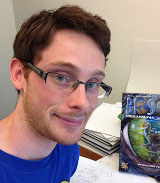Tag: Peter D. Heintzman

Pete attained a bachelor’s degree in biology from the University of Sheffield, UK, building on a childhood fascination with the history of life. This led him to complete a master’s degree in palaeobiology at the University of Bristol, UK, and a PhD in palaeogenetics at Royal Holloway University of London. His doctoral research focused on the analysis of ancient DNA from arctic beetles. Pete is currently a postdoctoral scholar at the University of California, Santa Cruz, where he has moved onto bigger things: ice-age bison, horses and mammoths. His current research focuses on using molecular techniques to investigate species’ responses to climatic and environmental changes over the past 100,000 years or so.